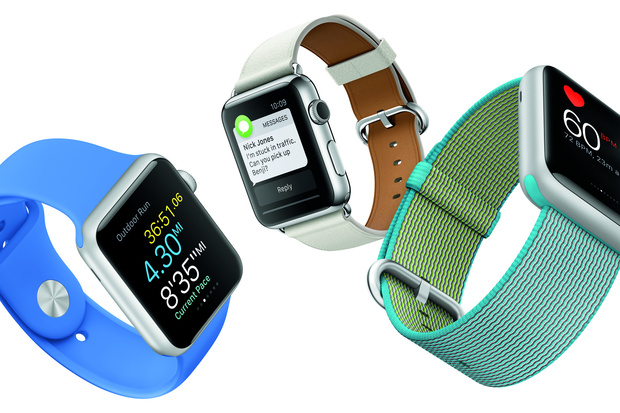Smartwatch shipments nosedive, but recovery due in 2017


The global smartwatch market nosedived by 32% in the second quarter of 2016, with Apple Watch shipments down by 55% when compared to a year earlier, according to research firm IDC.
The decline — the first since the market started in 2013 — is expected to reverse next year after Apple and Google launch important operating system updates this fall, IDC said. Also, more watches will launch with cellular connections to LTE wireless without the need to connect via Bluetooth to a smartphone.
Apple was the only smartwatch maker in the top five to see a decline in the second quarter, although the Apple Watch remained the top smartwatch by far, with 1.6 million devices shipped and 47% of the market, IDC said.
Samsung smartwatches placed second, with 600,000 shipped and 16% of the market. Lenovo, LG Electronics and Garmin rounded out the next three positions, each with less than 300,000 smartwatches shipped.
In all, 3.5 million smartwatches shipped in the second quarter, down from 5.1 million in the second quarter of 2015, for a 32% decline.
For all of 2016, smartwatch shipments are forecast to reach 19.2 million, just slightly below the 19.3 million units in 2015. The big rebound will come in 2017, when shipments reach 28 million, IDC said.
“There’s definitely optimism down the road, but not so much in 2016,” said IDC analyst Jitesh Ubrani, in an interview. IDC’s smartwatch category doesn’t include most fitness bands, which don’t run third-party applications, as smartwatches do.
The second-quarter decline for the Apple Watch came even as the device’s starting price was dropped to $299, down from $349. Apple is expected to launch its next-generation Apple Watch and WatchOS 3 as early as September. The new device is expected to support LTE independent of a Bluetooth connection to an iPhone.
Both the Samsung Gear S2 and LG Watch Urbane are LTE-capable, which have helped sales, Ubrani said. Wireless carriers such as AT&T and Verizon are allowing those smartwatches to use the same phone number as the user’s smartphone for a small additional monthly price. That marketing approach is expected to spread to many other carriers globally.
“Cellular enables brand new experiences by decoupling the phone from the watch, which gives developers new opportunities and opens new channels,” Ubrani said. “The telcos also want any way they can find to increase their average revenue per user, and watches are a way to do that.”
Meanwhile, an update to Android Wear 2.0 is expected in the fall, which could more fully support LTE connectivity than is provided today. “LG has had to make modifications to support LTE and you can’t do everything you want to do,” he said.
In addition to OS updates, Ubrani said top smartwatch makers still have a ways to go to improve styling of the devices, especially to attract women buyers. “All the watches look kind of similar and are not very female friendly,” he said.
In the next two years, more traditional watch makers will enter the smartwatch market. So far, Casio, Fossil and Tag Heuer have launched their own smartwatch models. As more traditional watch brands start selling the devices, the market will grow, IDC said.
New applications and games will also help smartwatch growth, Ubrani said. Some users might want to play Pokemon Go on a smartwatch, Ubrani said. However, a Pokemon Go Plus wearable has already been announced that can be worn on the wrist with a polyester wristband to connect via Bluetooth to a smartphone running the game. It will sell for $35.
“There’s definitely room to grow with apps for smartwatches,” Ubrani said. One application that Apple has already announced could be useful for workers, allowing an Apple Watch user to unlock a Macbook when approaching the laptop. Microsoft is working on a similar concept, he added.
“That kind of security feature using biometrics is very interesting to the enterprise audience,” he said.
Another change needed to help smartwatch growth is lower prices. “Prices do have to come down across the board,” Ubrani said.
“Right now, smartwatches don’t do a whole lot more than a phone and yet cost a lot more than a phone on contract,” he said. “On-contract pricing for a smartphone can be $100 to $300, but watches start at $300 and above.”
Carriers offer on-contract subsidies for phones, but not for smartwatches.










